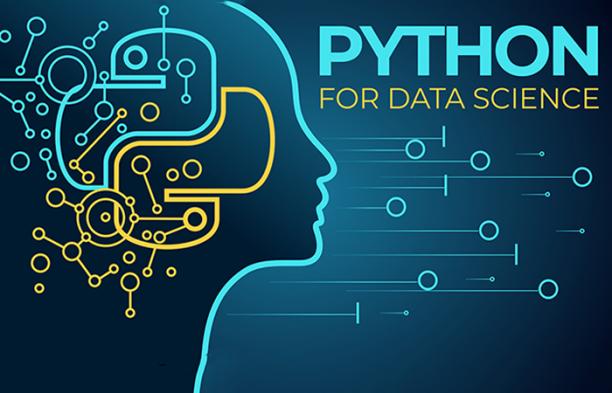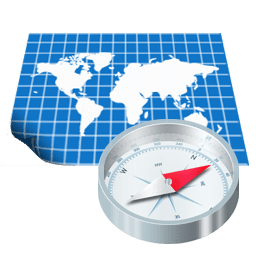Most Commented
Data Science With Python (4-Course Bundle)





Description material

Last updated 12/2020
MP4 | Video: h264, 1280x720 | Audio: AAC, 44.1 KHz
Language: English | Size: 7.47 GB | Duration: 17h 37m
Learn the data life cycle-from acquisition to processing to analysis-in Python
What you'll learn
Effectively pre-process data (structured or unstructured) before doing any analysis on the dataset
Perform statistical analysis using in-built Python libraries
Learn tricks and techniques that will be invaluable throughout your data science career
Learn how to deal with missing data and outliers to resolve data inconsistencies
Enhance your programming skills and master data exploration and visualization in Python
Explore and work with different plotting libraries
Work with industry-standard tools like Matplotlib, Seaborn, and Bokeh
Gain knowledge on how to prepare data and feed it to machine learning algorithms
Requirements
Basic Python programming experience is required before undertaking the course.
Description
If you're a Python developer and looking to start your journey in data science, then this course is for you. This 5-course bundle takes you from zero experience to a complete understanding of key concepts, edge cases, and using Python for real-world application development. You'll move progressively from the basics to working with larger complex applications. After completing this course, you'll have the skills you need to dive into an existing application or start your own project.Course 1:In this course, you will gather data, prepare data for analysis, perform simple statistical analyses, create meaningful data visualizations, and more! This course will equip us with the tools and technologies, also we need to analyze the datasets using Python so that we can confidently jump into the field and enhance our skill set. The best part of this course is the takeaway code templates generated using the real-life dataset.Course 2:Next, you will learn how to prepare data for analysis, perform simple statistical analyses, create meaningful data visualizations, predict future trends from data, and more.Course 3:You'll study different types of visualizations, compare them, and find out how to select a particular type of visualization using this comparison. You'll explore different plots, including custom creations. After you get a hang of the various visualization libraries, you'll learn to work with Matplotlib and Seaborn to simplify the process of creating visualizations. You'll also be introduced to advanced visualization techniques, such as geoplots and interactive plots. You'll learn how to make sense of geospatial data, create interactive visualizations that can be integrated into any webpage, and take any dataset to build beautiful and insightful visualizations.Course 4:This course will start you on your journey to mastering topics within machine learning. These skills will help you deliver the kind of state-of-the-art predictive models that are being used to deliver value to businesses across industries.
Overview
Section 1: Data Wrangling with Python 3.x
Lecture 1 The Course Overview
Lecture 2 Installing Anaconda Navigator on Windows/Linux
Lecture 3 Importing and Parsing CSV in Python
Lecture 4 Importing and Parsing JSON in Python
Lecture 5 Scraping Data from Public Web – Part 1
Lecture 6 Scraping Data from Public Web – Part 2
Lecture 7 Importing and Parsing Excel Files – Part 1
Lecture 8 Importing and Parsing Excel Files – Part 2
Lecture 9 Manipulating PDF Files in Python – Part 1
Lecture 10 Manipulating PDF Files in Python – Part 2
Lecture 11 Difference between Relational and Non-Relational Databases
Lecture 12 Storing Data in SQLite Databases
Lecture 13 Storing Data in MongoDB
Lecture 14 Storing Data in Elasticsearch
Lecture 15 Comparative Study of Databases for Storage
Lecture 16 The Most Important Step in Data Analysis
Lecture 17 Viewing/Inspecting DataFrames
Lecture 18 Renaming/Adding/Removing the DataFrame Columns
Lecture 19 Dropping Duplicate Rows
Lecture 20 Indexing DataFrame to Retrieve Specific Columns and Rows
Lecture 21 Merging/Concatenating/Joining DataFrames
Lecture 22 Dealing with Missing Values
Lecture 23 Filtering and Sorting of DataFrame
Lecture 24 Encoding/Mapping Existing Values – Part 1
Lecture 25 Encoding/Mapping Existing Values – Part 2
Lecture 26 Rescale/Standardize Column Values
Lecture 27 Common Cleaning Operations
Lecture 28 Exporting Datasets for Future Use
Lecture 29 Different Uses of Packages (Pandas, NumPy, SciPy, and Matplotlib)
Lecture 30 Types of Column Names/Features/Attributes in Structured Data
Lecture 31 Split-Apply-Combine (Performing Group By Operation)
Lecture 32 Descriptive Statistics Using Python – Part 1
Lecture 33 Descriptive Statistics Using Python – Part 2
Lecture 34 Using Visualizations
Lecture 35 Cool Visualization of Real-World Datasets of World Population Evolution
Lecture 36 Visualizations in Python – Part 1
Lecture 37 Visualizations in Python – Part 2
Lecture 38 Exploring an Online Visualization Tool (RAWGraphs)
Section 2: Exploratory Data Analysis with Pandas and Python 3.x
Lecture 39 The Course Overview
Lecture 40 Basic Statistical Measures
Lecture 41 Variance and Standard Deviation
Lecture 42 Visualizing Statistical Measures
Lecture 43 Calculating Percentiles
Lecture 44 Quartiles and Box Plots
Lecture 45 Finding Missing Values
Lecture 46 Dealing with Missing Values
Lecture 47 Hands-on with Dealing with Missing Values
Lecture 48 Case Study: Missing Data in Titanic Dataset
Lecture 49 What are Outliers?
Lecture 50 Using Z-scores to Find Outliers
Lecture 51 Modified Z-scores
Lecture 52 Using IQR to Detect Outliers
Lecture 53 Types of Variables
Lecture 54 Introduction to Univariate Analysis
Lecture 55 Skewness and Kurtosis
Lecture 56 Univariate Analysis over Olympics Dataset
Lecture 57 Introduction to Bivariate Analysis
Lecture 58 Correlation Coefficient
Lecture 59 Scatter Plots and Heatmaps
Lecture 60 Bivariate Analysis: Titanic Dataset
Lecture 61 Bivariate Analysis: Video Game Sales
Lecture 62 Introduction to Multivariate Analysis
Lecture 63 Multivariate Analysis over Titanic Dataset
Lecture 64 Multivariate Analysis over Pokemon Dataset
Lecture 65 Simpson's Paradox
Lecture 66 Correlation Is Not Causation
Lecture 67 Wine Data Analysis: Initial Setup
Lecture 68 Red Wine Analysis
Lecture 69 White Wine Analysis
Lecture 70 White Wine versus Red Wine: Analysis
Section 3: Data Visualization with Python
Lecture 71 Course Overview
Lecture 72 Installation and Setup
Lecture 73 Introduction
Lecture 74 Overview of Statistics
Lecture 75 NumPy
Lecture 76 pandas
Lecture 77 Lesson Summary
Lecture 78 Lesson Overview
Lecture 79 Comparison Plots
Lecture 80 Relation Plots
Lecture 81 Composition Plots
Lecture 82 Distribution Plots
Lecture 83 Geo Plots
Lecture 84 What Makes a Good Visualization?
Lecture 85 Lesson Summary
Lecture 86 Lesson Overview
Lecture 87 Overview of Plots in Matplotlib
Lecture 88 Basic Text and Legend Functions
Lecture 89 Basic Plots
Lecture 90 Layouts
Lecture 91 Images
Lecture 92 Writing Mathematical Expressions
Lecture 93 Lesson Summary
Lecture 94 Lesson Overview
Lecture 95 Controlling Figure Aesthetics
Lecture 96 Color Palettes
Lecture 97 Interesting Plots in seaborn
Lecture 98 Multi-plots in seaborn
Lecture 99 Regression Plots
Lecture 100 Squarify
Lecture 101 Lesson Summary
Lecture 102 Lesson Overview
Lecture 103 Geoplotlib Basics
Lecture 104 Tile Providers
Lecture 105 Custom Layers
Lecture 106 Lesson Summary
Lecture 107 Lesson Overview
Lecture 108 Bokeh Basics
Lecture 109 Adding Widgets
Lecture 110 Lesson Summary
Section 4: Data Science Projects with Python
Lecture 111 Course Overview
Lecture 112 Installation and Setup
Lecture 113 Lesson Overview
Lecture 114 Python and the Anaconda Package Management System
Lecture 115 Different Types of Data Science Problems
Lecture 116 Loading the Case Study Data with Jupyter and pandas
Lecture 117 Getting Familiar with Data and Performing Data Cleaning
Lecture 118 Boolean Masks
Lecture 119 Data Quality Assurance and Exploration
Lecture 120 Deep Dive: Categorical Features
Lecture 121 Exploring the Financial History Features in the Dataset
Lecture 122 Lesson Summary
Lecture 123 Lesson Overview
Lecture 124 Exploring the Response Variable and Concluding the Initial Exploration
Lecture 125 Introduction to Scikit-Learn
Lecture 126 Model Performance Metrics for Binary Classification
Lecture 127 True Positive Rate, False Positive Rate, and Confusion Matrix
Lecture 128 Obtaining Predicted Probabilities from a Trained Logistic Regression Model
Lecture 129 Lesson Summary
Lecture 130 Lesson Overview
Lecture 131 Examining the Relationships between Features and the Response
Lecture 132 Finer Points of the F-test: Equivalence to t-test for Two Classes and Cautions
Lecture 133 Univariate Feature Selection: What It Does and Doesn't Do
Lecture 134 Generalized Linear Models (GLMs)
Lecture 135 Lesson Summary
Lecture 136 Lesson Overview
Lecture 137 Estimating the Coefficients and Intercepts of Logistic Regression
Lecture 138 Assumptions of Logistic Regression
Lecture 139 How Many Features Should You Include?
Lecture 140 Lasso (L1) and Ridge (L2) Regularization
Lecture 141 Cross Validation: Choosing the Regularization Parameter and Other Hyperparameter
Lecture 142 Reducing Overfitting on the Synthetic Data Classification Problem
Lecture 143 Options for Logistic Regression in Scikit-Learn
Lecture 144 Lesson Summary
Lecture 145 Lesson Overview
Lecture 146 Decision Trees
Lecture 147 Training Decision Trees: Node Impurity
Lecture 148 Using Decision Trees: Advantages and Predicted Probabilities
Lecture 149 Random Forests: Ensembles of Decision Trees
Lecture 150 Fitting a Random Forest
Lecture 151 Lesson Summary
Lecture 152 Lesson Overview
Lecture 153 Review of Modeling Results
Lecture 154 Dealing with Missing dаta: Imputation Strategies
Lecture 155 Cleaning the Dataset
Lecture 156 Mode and Random Imputation of PAY_1
Lecture 157 A Predictive Model for PAY_1
Lecture 158 Using the Imputation Model and Comparing it to Other Methods
Lecture 159 Financial Analysis
Lecture 160 Final Thoughts on Delivering the Predictive Model to the Client
Lecture 161 Lesson Summary
This course is for Python developers, data analysts, and IT professionals who want to progress in their careers as fully-fledged data scientists/analytics experts.,Also, anyone who wants to use data analytics/machine learning to enrich their current personal or professional projects will also benefit from the course.

Buy Premium Account From My Download Links & Get Fastest Speed.
https://rapidgator.net/file/9b3ce144c5739b45b6e53ebd9cce8d54/Data_Science_with_Python_4Course_Bundle.part1.rar.html
https://rapidgator.net/file/42a7c32f22ff2d69b905ddb5e52f5720/Data_Science_with_Python_4Course_Bundle.part2.rar.html

Join to our telegram Group
Information
Users of Guests are not allowed to comment this publication.
Users of Guests are not allowed to comment this publication.
Choose Site Language
Recommended news
Commented


![eM Client Pro 9.2.1735 Multilingual [Updated]](https://pikky.net/medium/wXgc.png)






![Movavi Video Editor 24.0.2.0 Multilingual [ Updated]](https://pikky.net/medium/qhrc.png)

